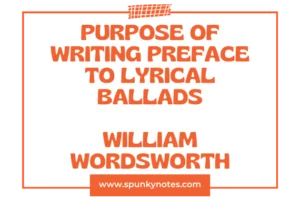

Estimated Reading Time: 16 min
Watt MCQs
1. Where did Mr Hackett first see the occupied seat?
A. Corner, failing light
B. Rail, near tram
C. Park, dark night
D. House, front yard
2. What activity were the couple in the seat engaged in?
A. Reading poems
B. Waiting for the tram
C. Showing affection
D. Eating dinner
3. What item was dangling limply from the gentleman’s hand?
A. Full cigarette
B. Spent cigarette
C. Empty lighter
D. Stick and rail
4. What term did Mr Hackett use to describe things that pleased him?
A. His property
B. Shared goods
C. Not his, but his
D. Municipality property
5. What nickname did the gentleman call Mr Hackett?
A. Mad Hackett
B. Hunchy Hackett
C. Dear Hackett
D. Old Hackett
6. What item did the gentleman use so Mr Hackett could read?
A. Petrol-lighter
B. Matchbox
C. Electric torch
D. Tiny candle
7. What occasion did Tetty describe to Mr Hackett?
A. Goff’s illness
B. Larry’s birth night
C. Grehan’s trial
D. Nixon’s marriage
8. How did Tetty sever the umbilical cord for Larry?
A. Doctor’s scissors
B. Her teeth
C. Sharp stone
D. Across her knee
9. What age was Mr Hackett when he fell off a ladder?
A. Five
B. One
C. Fifteen
D. Forty
10. How much money did Watt owe Mr Nixon?
A. Four shillings
B. Five shillings
C. Two and threepence
D. Six and ninepence
11. What distinctive feature did Mr Nixon grudgingly share about Watt?
A. Limped dreadfully
B. Huge big red nose
C. Wore clip-on ties
D. Excellent bowler
12. What was the gentleman on the train named?
A. Mr Hackett
B. Mr Lowry
C. Mr Spiro
D. Mr Evans
13. What periodical did Mr Spiro edit?
A. The Catholic Weekly
B. The Popular Monthly
C. Crux, the monthly
D. Spiritual Syringe
14. What question did Martin Ignatius MacKenzie’s letter ask about?
A. The Holy Family
B. A consecrated wafer
C. The eels of Como
D. Spiritual costiveness
15. How did Watt prefer to orient himself in the moving train?
A. Face the engine
B. Face the direction
C. Back to the destination
D. Back to driver
16. What was Watt’s unique method of moving due east?
A. Bending his knees
B. Headlong tardigrade
C. Simple shuffling
D. North/south flinging
17. What animal’s movements did Lady McCann compare to Watt’s head?
A. Bear turning
B. Dog trotting
C. Cat stalking
D. Goat butting
18. What did Lady McCann throw at Watt on the road?
A. Shoe
B. Stick
C. Stone
D. Parcel
19. Where did Watt roll himself over to rest near the road?
A. Into the ditch
B. On the grass
C. Against a tree
D. Behind a wall
20. What was visible just before Watt reached Mr Knott’s house?
A. A single light
B. Knott’s chimneys
C. The open gate
D. Lady McCann
21. Who was the gentleman Watt met in the kitchen upon arrival?
A. Mr Knott
B. Walter
C. Vincent
D. Arsene
22. What garment did the man Watt meet in the kitchen wear?
A. Old dark coat
B. Fine full apron
C. Carpet slippers
D. Felt hat
23. What did Arsene say he regretted exceedingly?
A. His failures
B. Everything
C. His life spent
D. The boil
24. What laugh laughs at that which is unhappy?
A. Bitter laugh
B. Hollow laugh
C. Mirthless laugh
D. Ethical laugh
25. What type of items did Mary (the former housemaid) eat, turn and turn about?
A. Bread and butter
B. Meat and pastry
C. Onions and peppermints
D. Fish and stout
26. Who were the two callers who came to tune the piano?
A. The Nixons
B. The Galls
C. Mr Graves
D. Mr Spiro
27. What conclusion did the Galls reach about the piano?
A. Excellent condition
B. Doomed
C. Needs new strings
D. Only one damper
28. What effect did the Galls incident have on Watt’s need for meaning?
A. Felt tranquil
B. Sought another meaning
C. Accepted meaning
D. Forgot entirely
29. What type of meaning did Watt seek for inexplicable incidents?
A. Real meaning
B. Coerced meaning
C. Simple truth
D. External symbol
30. What was the name Watt had trouble applying to Mr Knott’s kitchen object?
A. Kettle
B. Duster
C. Pot
D. Chair
31. How often was Mr Knott’s unique food dish prepared?
A. Daily
B. Weekly
C. Monthly
D. Annually
32. What common items were mixed into Mr Knott’s dish?
A. Food, drink, physic
B. Meat, cheese, wine
C. Milk, water, spices
D. Eggs, fish, tea
33. What was the name of the large, impoverished family connected to the dog?
A. Sharpes
B. Brynes
C. Lynches
D. Nackybal
34. What was the dog’s name when Watt began service on the ground floor?
A. Cis
B. Larry
C. Kate
D. Joe
35. Who were the two small men who led the famished dog nightly?
A. Tom and Jack
B. Art and Con
C. Joe and Jim
D. Sean and Simon
36. Who was the fishwoman that Watt greatly liked?
A. Mrs Nixon
B. Mrs Gorman
C. Mrs Graves
D. Lady McCann
37. What drink did Watt habitually share with the fishwoman?
A. Hot tea
B. Glass of milk
C. Stout
D. Brandy
38. What was the probable reason Mrs Gorman and Watt never “coalesced”?
A. No privacy
B. Watt lacked strength
C. Mrs Gorman lacked time
D. Both lack/time force
39. What did Mr Graves (the gardener) complain about to Watt?
A. Low wages
B. Bad harvest
C. Wife troubles
D. Old age
40. How did Mr Graves pronounce “third and fourth”?
A. Bird and forth
B. Turd and fart
C. Dirt and forth
D. Third and fourth
41. What was the most fixed item of furniture in Mr Knott’s room?
A. The tallboy
B. The round bed
C. The washhand-stand
D. The chairs
42. What was Mr Knott’s attitude when moving about the house?
A. Masterful stride
B. Fumbling unfamiliarity
C. Swift urgency
D. Determined progress
43. What was Mr Knott’s first conjecture of interest to Watt?
A. Need for food
B. Need to not need
C. Need for clothing
D. Need for solitude
44. How did Mr Knott wear his clothes to bed?
A. Removed all dayclothes
B. Over his dayclothes
C. Under his nightshirt
D. He slept nude
45. What was the first stage of Watt’s language inversion observed by the narrator?
A. Sentences in reverse
B. Letters in reverse
C. Words in reverse
D. Words and letters
46. What type of reversal followed the word-order inversion?
A. Sentence order
B. Periods in reverse
C. Letters in reverse
D. Mixed syntax
47. What did the narrator say was visible from Watt’s window?
A. Mr Knott’s face
B. A bustling town
C. A race-course
D. The distant sea
48. Who did Watt encounter sitting in the kitchen upon his departure?
A. Mr Gorman
B. Micks
C. Arthur
D. Mr Nixon
49. What items did Watt carry when leaving Mr Knott’s house?
A. Two large suitcases
B. Two small grousebags
C. A coat and hat
D. Food and water
50. Where did Watt buy his mismatched boot and shoe?
A. City market
B. Found on the sea-shore
C. From a one-legged man
D. From Mr Knott
Brief Overview
Watt is a novel by Samuel Beckett, first published in 1953. The novel is a key work of existentialism and the Theatre of the Absurd. It profoundly questions the limits of human knowledge, the absurdity of life, and the inherent difficulty of communication.
The novel begins with Mr Hackett observing a strange couple near his public seat. He then speaks with Mr and Mrs Nixon about a peculiar man named Watt. Watt is travelling by train to a new job. He meets Mr. Spiro, who talks cryptically about religion.
Watt arrives at Mr Knott’s large, dark house. He is there to replace the outgoing servant, Arsene, who delivers a confusing, long farewell speech. Watt works on the ground floor. Mr Knott eats a single, boiled meal twice a day.
Watt struggles to understand the house’s strange, arbitrary events. These include the Galls’ visit, during which they tune a broken piano. Watt also learns about the highly complex, logistical plan to ensure a hungry dog, managed by the Lynch family, eats Mr Knott’s leftovers. Watt finds it almost impossible to correctly name the objects he sees, even calling a pot “not a pot.”
Watt later moves upstairs. He learns that Mr Knott looks radically different every day, changing in height, weight, and colour. Watt concludes that Mr Knott only needs “not to need” anything, and he requires a witness to observe this state of self-cancellation.
Watt eventually leaves the house one night. He stops on the road and bursts into tears. He walks to the closed railway station. Watt buys a ticket to the “further end” of the line and leaves, a final, absurd action of movement without purpose


